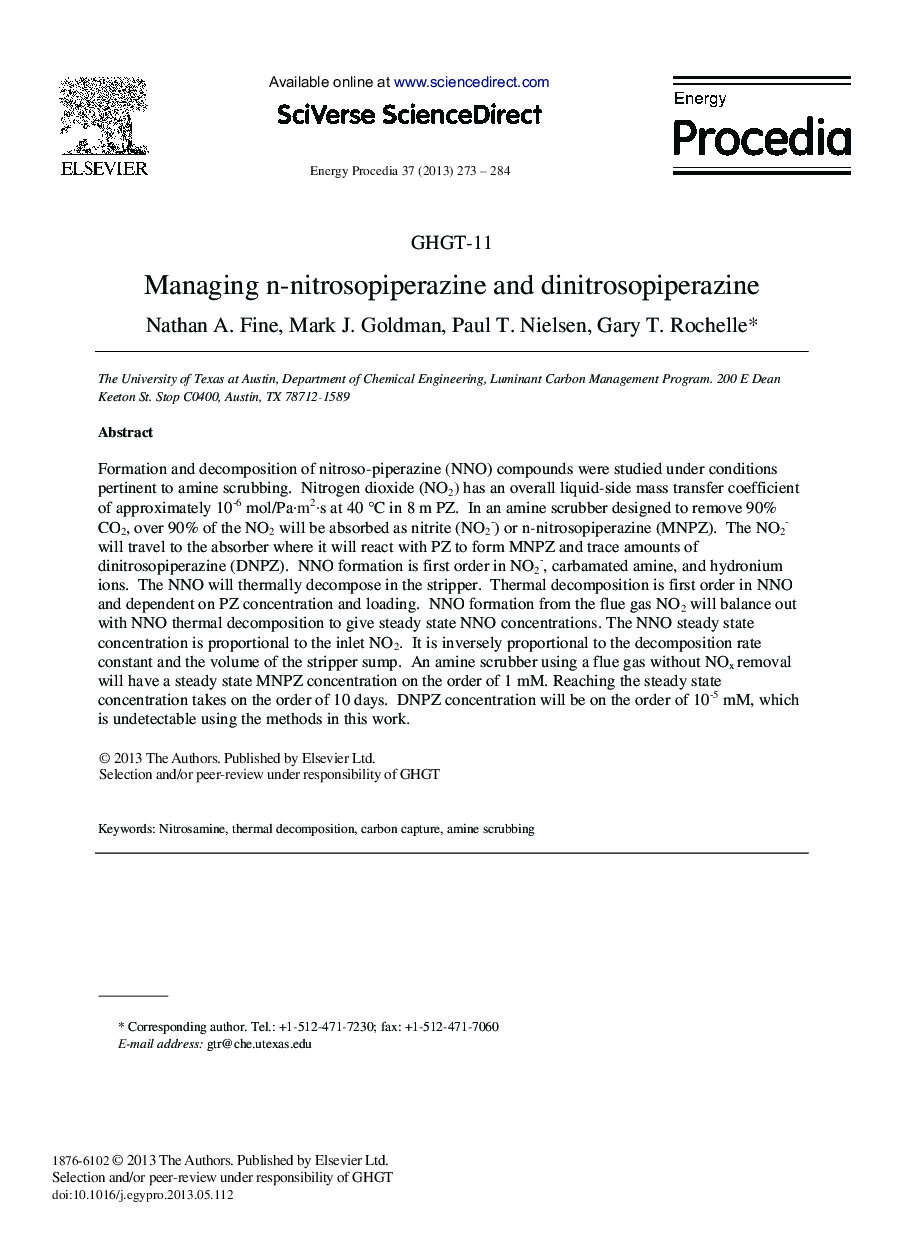| Article ID | Journal | Published Year | Pages | File Type |
|---|---|---|---|---|
| 1512825 | Energy Procedia | 2013 | 12 Pages |
Formation and decomposition of nitroso-piperazine (NNO) compounds were studied under conditions pertinent to amine scrubbing. Nitrogen dioxide (NO2) has an overall liquid-side mass transfer coefficient of approximately 10−6 mol/Pa·m2·s at 40 °C in 8 m PZ. In an amine scrubber designed to remove 90% will travel to the absorber where it will react with PZ to form MNPZ and trace amounts of dinitrosopiperazine (DNPZ). NNO formation is first order in NO2−, carbamated amine, and hydronium ions. The NNO will thermally decompose in the stripper. Thermal decomposition is first order in NNO and dependent on PZ concentration and loading. NNO formation from the flue gas NO2 will balance out with NNO thermal decomposition to give steady state NNO concentrations. The NNO steady state concentration is proportional to the inlet NO2. It is inversely proportional to the decomposition rate constant and the volume of the stripper sump. An amine scrubber using a flue gas without NOx removal will have a steady state MNPZ concentration on the order of 1 mM. Reaching the steady state concentration takes on the order of 10 days. DNPZ concentration will be on the order of 10−5 mM, which is undetectable using the methods in this work.
